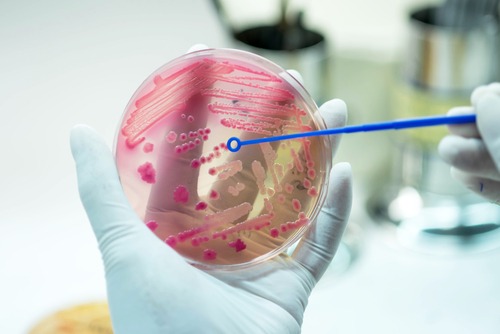
Warning that antibiotic resistance is one of the greatest public health threats of the age, the Infectious Diseases Society of America (IDSA) and several partner organizations wrote to House leaders last week urging them to create a comprehensive One Health approach to counter the rising problem.
For this, IDSA and its partners requested significant increases in federal investments to both domestic and global programs that would include human, animal, and environmental health, along with surveillance, prevention, stewardship, research, and innovation. Failure to do so could result in weaker footing for addressing future public health emergencies, IDSA warned, as those requiring hospitalization could be put at greater and greater risk of secondary resistance infections. COVID-19 patients are no exception.
“Drug-resistant infections sicken at least 2.8 million people and kill at least 35,000 people in the United States each year,” IDSA wrote. “Antibiotic resistance accounts for direct health care costs of at least $20 billion. Globally, over 700,000 people die each year, accounting for a cost as high as $1.2 trillion. If we do not act now, antibiotic resistant infections will be the leading cause of death by 2050 and could cost the world $100 trillion.”
The need has not generated enough efforts on the part of private industry, though. Small companies typically handle innovation — and many of these are struggling to stay afloat. Returns on investment are difficult to muster with antibiotic research and development, according to IDSA, and they need to be paired with new diagnostic tools capable of directing appropriate antibiotic use and surveillance.
Specifically, the organizations urged:
- $672 million for the Antibiotic Resistance Solutions Initiative led by the Centers for Disease Control and Prevention (CDC), warning that its current resources are insufficient.
- $60 million for the CDC’s Advanced Molecular Detection program to better detect and respond to emerging diseases.
- $100 million for the National Healthcare Safety Network, allowing it to expand data collection on antibiotic use and resistance in health care facilities, along with technical support.
- $465.4 million for CDC’s Division of Global Health Protection to improve global health capacity to stop threats early.
- $500 million for the Assistant Secretary for Preparedness and Response to support the Biomedical Advanced Research and Development Authority and the Project BioShield Special Reserve Fund.
- $6.52 billion for the National Institute of Allergy and Infectious Diseases for everything from resistance research to training new investigators and supporting development.
- $20 million for the Food and Drug Administration to strengthen programs supporting antibiotic stewardship and antibiotic effectiveness, along with surveillance on farms and other agricultural settings.
- $85 million for antimicrobial resistance efforts at the U.S. Department of Agriculture, which would include agricultural stewardship, research, and funding to assist producers in finding new vaccines, antibiotic alternatives, and animal management techniques for farmers and livestock growers.
- More than $3 billion for the U.S. Agency for International Development and the Department of State, allowing for greater investments in health systems in low-income countries, as well as anti-tuberculosis, AIDS, and Malaria efforts.
- Increased funding for research and development being conducted by the Department of Defense to prevent, mitigate and treat antibiotic bacteria, in addition to increasing surveillance.




